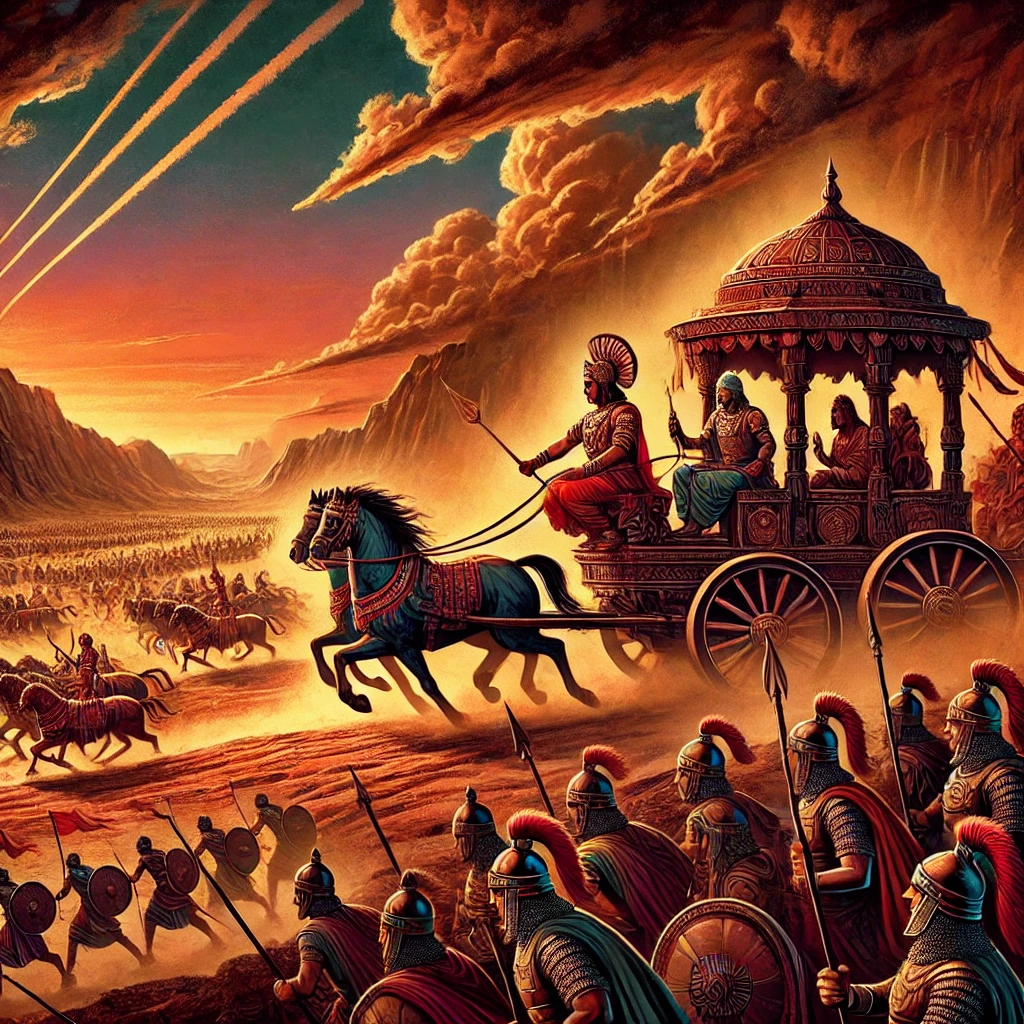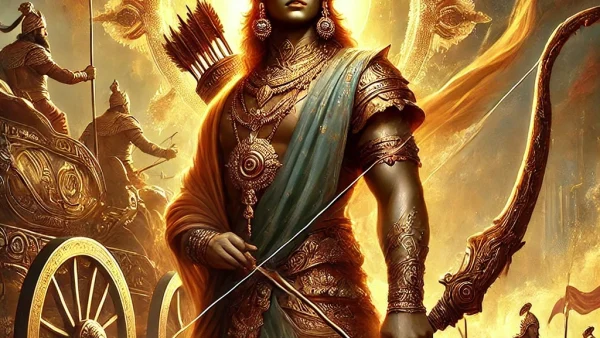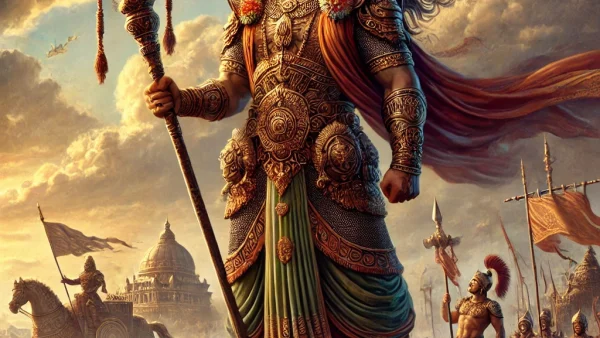The Mahabharata, one of India’s greatest epics, captivates readers with its tales of heroism, family drama, and philosophical teachings. At the heart of this monumental text lies the Kurukshetra War, an 18-day battle that reportedly shaped the course of ancient Indian history. But how much of this epic is rooted in historical reality, and how much is a product of mythological embellishment? Let’s delve into the evidence, theories, and spiritual significance surrounding the Kurukshetra War.
The Historical Backdrop: The Battle of the Ten Kings
The Rig Veda, the earliest known Indian scripture, mentions a conflict known as the Battle of the Ten Kings. This battle involved the Bharata clan fighting against a coalition of tribes in the Sutlej-Ganga region. Scholars often argue that this conflict might have served as the nucleus for the Kurukshetra War, later expanded into an epic tale.
- Victory and the Rise of the Kuru Polity: The Bharata tribe’s victory established the Kuru Kingdom, recognized as the first political structure of the late Vedic period (~800 BC).
- Parikshit and Janmejaya: The Rig Veda mentions Parikshit as the first Kuru king, succeeded by his son Janmejaya. Interestingly, the Mahabharata names Arjuna’s grandson as Parikshit, who ascended the throne after the Pandavas’ era. This continuity suggests a historical lineage intertwined with myth.
Mythology Meets History: The Mahabharata’s Role
The Mahabharata, termed Itihasa (history), blurs the lines between fact and fiction. Ancient Indian texts often wove together historical events with moral and philosophical lessons, a tradition that reflects the society’s emphasis on Dharma (righteousness).
Evidence Supporting Historical Claims
- Astronomical Alignments: The Mahabharata describes specific planetary positions and eclipses during the war. Modern astronomical software can recreate these alignments, dating events to approximately 3100–2800 BC.
- Geographical Markers: Locations like Kurukshetra, Indraprastha (Delhi), and Hastinapur (near Meerut) correspond to modern places with archaeological significance.
- Unusual Findings at Kurukshetra: The region’s reddish soil, reportedly tinged with iron and traces of residual radioactivity, has sparked theories of advanced weaponry like Brahmastras.
The Case Against Literal Interpretation
Despite compelling evidence, many historians and scholars urge caution.
- Exaggeration and Embellishment: Oral traditions often amplify narratives to enhance their impact. The detailed dialogues in the Mahabharata, delivered in poetic verse, raise questions about their authenticity as historical records.
- Symbolism Over Literalism: The epic serves as a moral compass, guiding individuals through Dharma Sankat (ethical dilemmas). Its primary aim was likely spiritual instruction rather than historical documentation.
The Kurukshetra War Through a Spiritual Lens
The Mahabharata is less about a war and more about the eternal battle within. Arjuna’s moral crisis, resolved by Lord Krishna’s teachings in the Bhagavad Gita, exemplifies the struggle between duty and desire.
Key Takeaways from the Epic
- Dharma as the Core: The Kurukshetra War symbolizes the importance of upholding righteousness, even amid personal losses.
- A Case Study for Life: The epic provides practical lessons on leadership, ethics, and decision-making.
Counterarguments and Alternative Perspectives
- Pseudo-History: Critics argue that the Mahabharata’s historical claims are intertwined with myth, making it impossible to separate fact from fiction.
- Astrological Interpretations: While astronomical data offers intriguing insights, interpretations often vary, casting doubt on definitive conclusions.
- Cultural Propagation: The Mahabharata’s evolution over centuries reflects changing societal values, with later interpolations adding layers of mythology.
Bridging the Gap: Mythology and History
The Kurukshetra War’s reality might forever remain elusive, but its essence transcends historical debates. Whether historical or allegorical, the epic has shaped Indian thought, culture, and spirituality for millennia.
Exploring the Legacy
- In Literature: The Mahabharata’s tales continue to inspire authors, dramatists, and filmmakers.
- In Philosophy: Its teachings remain relevant, addressing timeless human conflicts and ethical dilemmas.
- In Rituals and Worship: The epic’s characters, like Krishna, remain central to Hindu practices and beliefs.
A War Beyond Time
The question, “Was the Kurukshetra War real?” might never have a definitive answer. However, its significance lies not in its historicity but in its enduring lessons. The Mahabharata, with its rich tapestry of history, mythology, and spirituality, remains a timeless guide to navigating life’s complexities.
As you ponder the reality of the Kurukshetra War, remember that the epic’s greatest truth lies not in the battlefields but in its ability to illuminate the path of Dharma for generations to come.
Related Questions You Might Have
- Who was Duryodhana, and why is he pivotal in the Mahabharata?
- What role did Krishna play in the Kurukshetra War?
- How does the Mahabharata relate to modern leadership and conflict resolution?




Pingback: Who is Karnan in Mahabharata? - Spiritual Guru